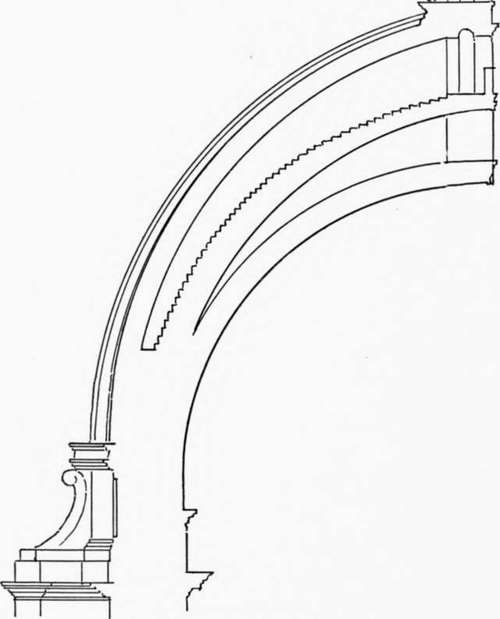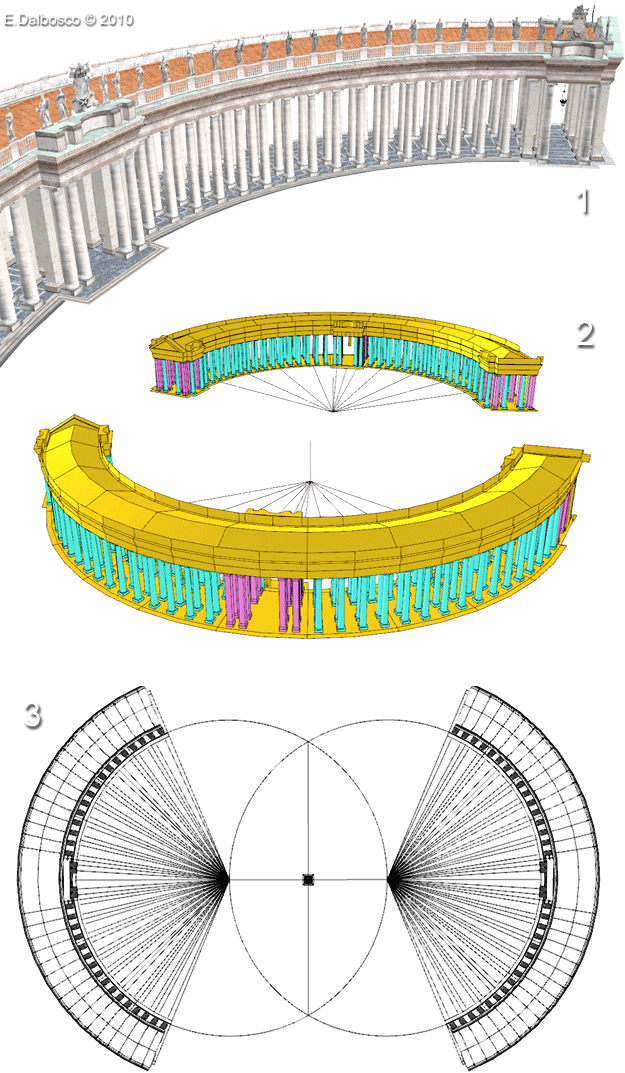53016, RE: хорошая подборка
Послано guest, 27-01-2011 19:21
"Character Of Renaissance Architecture", by Charles Herbert Moore
The Dome Of St. Peter's. Part 3
As for Bramante's intended architectural treatment of the rest of the building we have, as before remarked, no precise information. It appears, however, most probable that he meant to cover the arms of the cross with barrel vaulting on massive square piers and arches, with a single order of pilasters such as Alberti had used in St. Andrea at Mantua, and such as Michael Angelo actually employed, though in a way peculiar to himself, and probably unlike that in which Bramante would have done it. For Bramante would, I think, have followed Alberti's example in raising the order on pedestals — the great scale of St. Peter's especially calling for such treatment. Bramante would have realized that a single order large enough to rest directly on the pavement and allow the entablature to pass over the crowns of the arches of the great arcades, would dwarf the apparent scale of the whole interior, as Michael Angelo's order actually does. But whatever his intention was as to these details, Bramante died before they could be carried out, and we are left in the dark as to what the church as a whole would have been had he lived to complete it.
To the work of his numerous successors prior to the appointment of Michael Angelo, we need give no attention because their labours did not materially affect the final result. Their work was largely on paper only, and the building as it now exists is substantially Michael Angelo's design, based on that of Bramante, but with extensive, and damaging, additions by subsequent architects.
Michael Angelo at the time of his appointment as architect, in the year 1546, was seventy-two years of age. He professed great respect for the original scheme of Bramante, yet he radically changed the form and adjustment of its main feature, the dome. In conformity with Bramante's project, he made the drum massive at the base and thinner above, but in place of Bramante's external colonnade surmounted by a solid ring of masonry, forming a continuous abutment at the springing of the vault, he substituted a series of sixteen isolated buttresses, and raised the dome so high above them that they do not meet its thrusts at all. The drum is carried up above the buttresses so as to form
Brunelleschi's double vault, and was to include (as the model, Fig. 26, shows) three separate shells.1 The inner shell was to be hemispherical (Michael Angelo thus showing that he appreciated the superior character of the dome of the Pantheon and an attic over the order with which the buttresses are ornamented, and from the top of this attic the dome is sprung. The stepped circles of abutting masonry at the haunch are omitted, and instead of one solid vault shell, such as Bramante intended, Michael Angelo's project provided for a variation of that of Bramante's scheme to the dome of Brunelleschi as to internal effect), while the other two were to be pointed, with diverging surfaces. Following Brunelleschi, he introduced a system of enormous ribs rising over the buttresses of the drum, and converging on the opening at the crown of the vault. These ribs unite the outermost two shells, extending through the thickness of both, and support the lantern.

St Peter's Basilica and Bernini's Colonnade

Notes about the model "St Peter's Basilica and Bernini's Colonnade"
.
|

